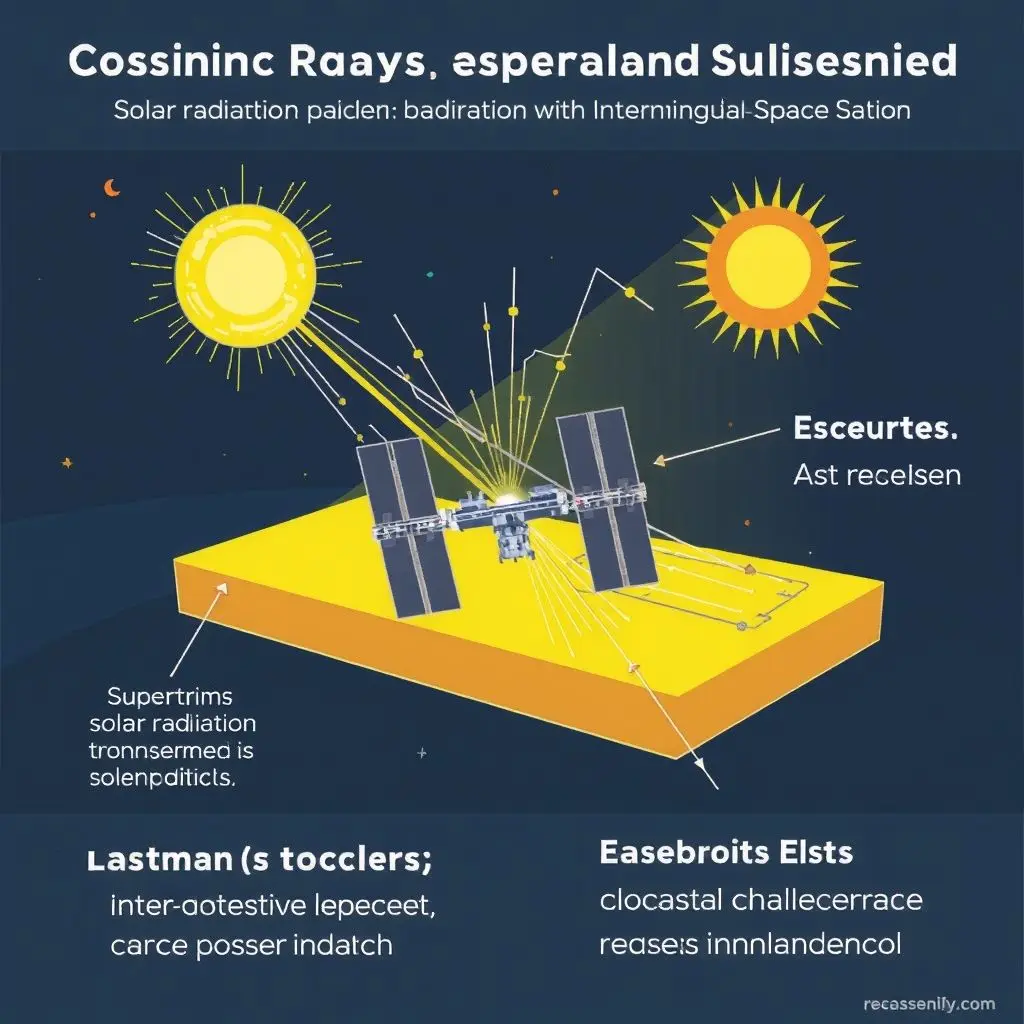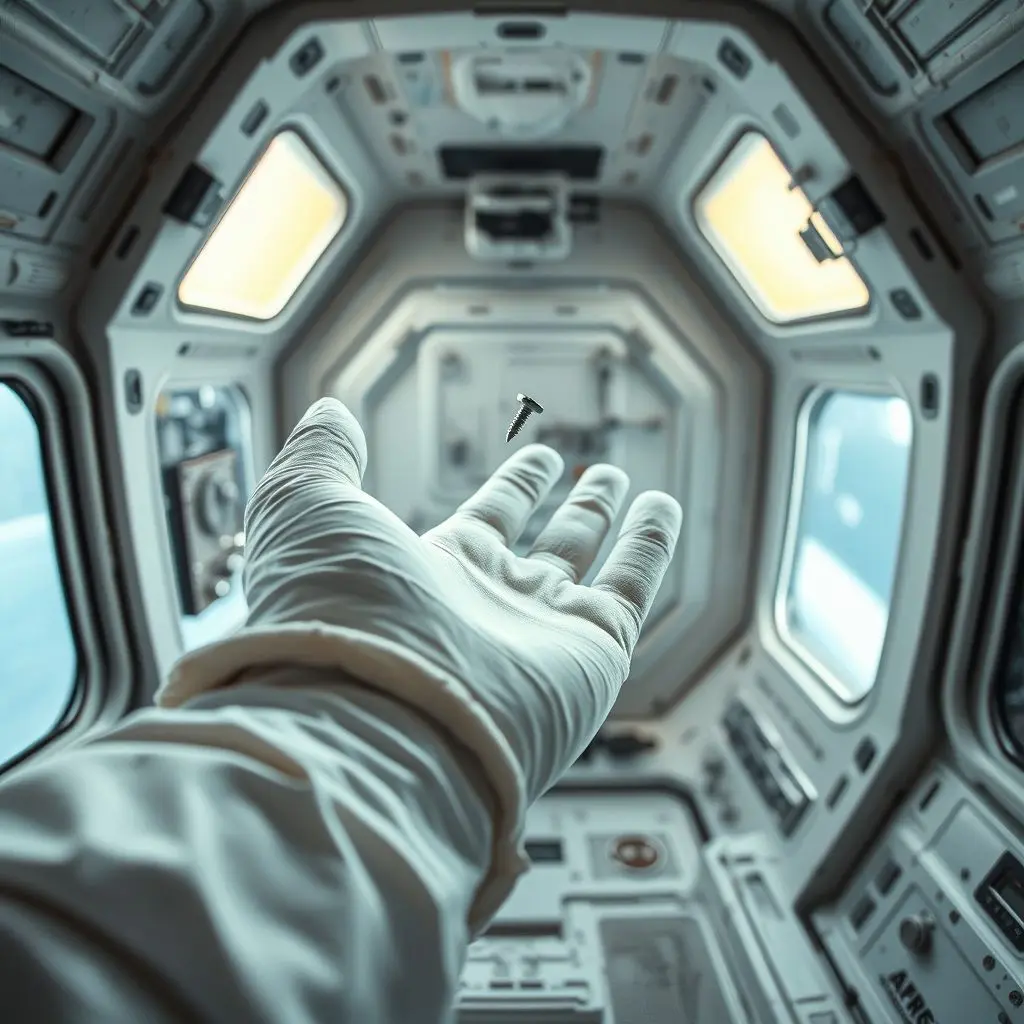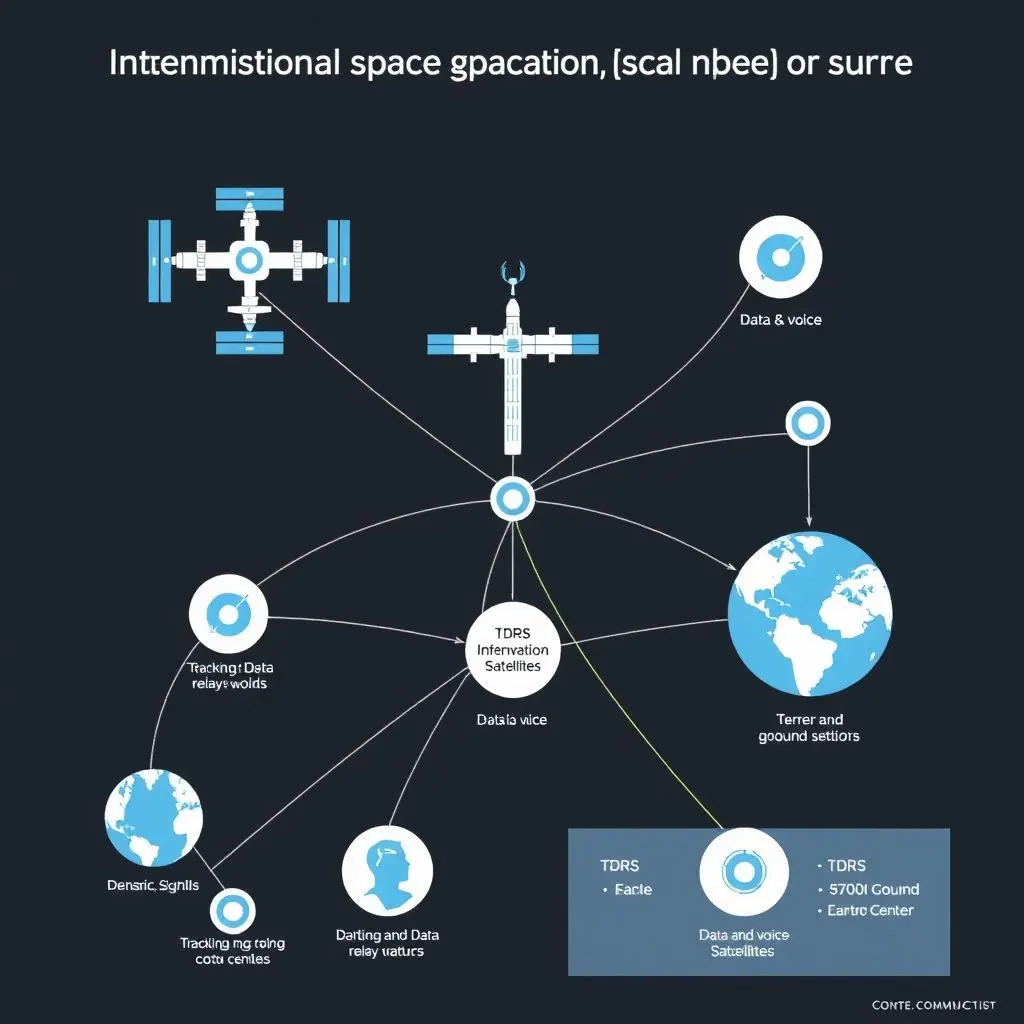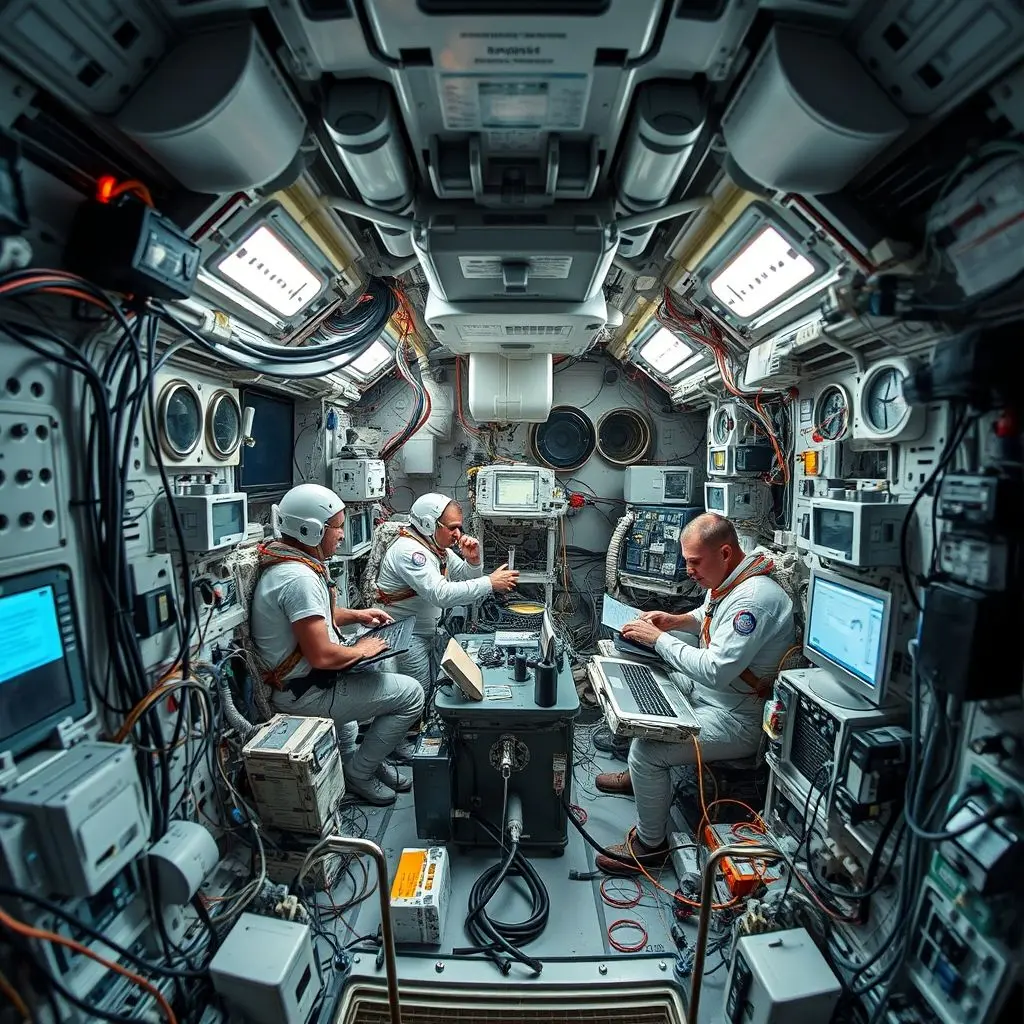Ever had your Wi-Fi conk out mid-meeting and thought your day was ruined? Now, picture that same frustration, but you’re hurtling through space at 17,500 mph, 250 miles above the nearest IT support. Welcome to the high-stakes, often mind-boggling world of technology aboard the International Space Station (ISS). It’s a place where next-day delivery for a critical spare part is a cosmic joke, and fixing a vital system might just involve a spacewalk or MacGyver-level ingenuity with a severely limited toolkit. Every piece of tech, from complex life support to the humble laptop, must withstand the relentless assault of cosmic radiation and the peculiar physics of zero gravity, where even a tiny, wayward screw can become a hazardous projectile. And those real-time video calls with Mission Control? They come with a built-in awkward pause, making every conversation a uniquely paced dance. Life on the ISS is less sleek sci-fi fantasy and more the ultimate, continually evolving DIY project, constantly battling the unforgiving vacuum of space.
If you thought your last tech hiccup was bad, brace yourself. Before we dive deeper into the orbital tech tango, get a taste of the astronaut’s reality with our quick video snapshot:
Table of Contents
The Tyranny of Distance: When Amazon Prime Can’t Reach You
On Earth, a broken component usually means a quick trip to the store or an online order. For ISS astronauts, it’s a whole different universe of logistical nightmares.
No Overnight Shipping to Orbit
When a critical piece of hardware fails on the ISS, there’s no Amazon Prime for space. Replacements must be meticulously planned, packaged, and launched on infrequent cargo resupply missions (think SpaceX Dragon, Northrop Grumman Cygnus, or Russian Progress vehicles). This process can take weeks, if not months. This means redundancy is key – many systems have backups, and even backups for backups. But when unique or major components fail, the waiting game begins, often forcing astronauts and ground control to devise clever workarounds.
The Spacewalk Imperative: The Ultimate House Call
What if the broken part is on the outside of the station? That’s when things get truly cinematic, and incredibly dangerous. Extravehicular Activities (EVAs), or spacewalks, are complex, physically demanding operations requiring years of training. Astronauts don bulky, pressurized suits – essentially personal spacecraft – and venture out to perform repairs and installations. Every move is choreographed, every tool tethered, because dropping a wrench in space isn’t just embarrassing, it creates orbital debris.

Hardware Under Siege: The Environmental Gauntlet of Space
The ISS isn’t just far away; it’s in an environment actively hostile to technology as we know it.
Cosmic Radiation: The Invisible Saboteur
Beyond Earth’s protective atmosphere and magnetosphere, the ISS is constantly bombarded by cosmic rays and solar radiation. These high-energy particles can wreak havoc on electronics, causing ‘bit flips’ in memory, damaging processors, and degrading materials over time. Shielding helps, but it can’t block everything. Therefore, much of the ISS’s tech uses radiation-hardened components, which are older, slower, and more expensive than commercial off-the-shelf parts. Even so, glitches and resets due to radiation events are a known, and managed, risk.

Zero Gravity: Where Physics Gets Playful (and Problematic)
Microgravity is cool, right? Stuff floats! Well, that’s precisely the problem for engineers. Dust and debris don’t settle; they float, potentially clogging vents and getting into sensitive equipment. Liquids behave bizarrely, clinging to surfaces due to surface tension, making fluid management complex. Even simple things like cooling fans work differently without convection currents. And yes, those tiny screws? They have an uncanny ability to escape and embark on solo missions around the module if not carefully managed.

Thermal Extremes: A Constant Balancing Act
In direct sunlight, the ISS surface can soar to 250°F (121°C). In shadow, it can plummet to -250°F (-157°C). Managing these extreme temperature swings is critical for both crew comfort and equipment operation. The station uses a complex system of ammonia loops, radiators, and heat exchangers to collect excess heat from electronics and sun-facing surfaces and radiate it into space. Any failure in this thermal control system can quickly lead to overheating components.
Keeping in Touch: The Communication Conundrum
Maintaining a link with Earth is vital for operations, science, and crew morale, but it’s not like picking up your smartphone.
“Houston, We Have a… Delay”
Communications between the ISS and Earth are routed through a network of Tracking and Data Relay Satellites (TDRS) in geosynchronous orbit. This introduces a signal delay of a few seconds each way. It might not sound like much, but it makes real-time conversation feel stilted and can complicate intricate, time-sensitive procedures guided from the ground. Imagine trying to troubleshoot a complex server issue with a persistent lag in every instruction and response!

Data Overload: Managing the Information Flood
The ISS is a flying laboratory, generating terabytes of scientific data, telemetry, and video. Getting this data down to Earth and distributing it to researchers worldwide is a constant challenge. Bandwidth, while significantly improved over the years, is still a precious resource, requiring careful prioritization and scheduling.
The Art of Orbital Improvisation: Maker Culture in Microgravity
When you can’t just order a part, ingenuity becomes your most valuable tool.
Genius with a Wrench (and Sometimes, Unconventional Tools)
Astronauts are highly trained, but they’re also resourceful problem-solvers. Stories abound of them jury-rigging solutions using whatever is on hand – famously, the Apollo 13 crew used duct tape, plastic bags, and a lunar module’s CO2 scrubber to save their mission. ISS crews regularly face unexpected tech gremlins, from faulty sensors to malfunctioning exercise equipment, and must often devise creative fixes with guidance from ground control.
3D Printing: A Game Changer in Orbit?
The advent of 3D printers on the ISS has been a significant step forward. Astronauts can now manufacture custom tools, replacement parts, and even medical devices on demand. This reduces reliance on Earth-based supply chains and allows for rapid prototyping of solutions to unforeseen problems. It’s a glimpse into a future where space missions are more self-sufficient.
More Than Just Gadgets: The Life-Critical Tech
Beyond the computers and communication arrays, the most crucial technology on the ISS is what keeps the astronauts alive.

ECLSS: The Unsung Hero in a Tin Can
The Environmental Control and Life Support System (ECLSS) is a marvel of engineering. It provides breathable air, maintains temperature and humidity, manages atmospheric pressure, and, critically, recycles wastewater. It scrubs carbon dioxide exhaled by the crew and generates oxygen through electrolysis of water. Any major failure in ECLSS would be catastrophic, making its reliability and maintainability paramount.
Water Recycling: Yesterday’s Sweat, Tomorrow’s Hydration
Water is heavy and expensive to launch. The ISS’s Water Recovery System recycles about 93% of all water used by the crew – including sweat, urine, and condensation. While the idea might sound unappetizing, the processed water is purer than what most people drink on Earth. This closed-loop system is vital for long-duration missions and is a key technology for future deep-space exploration.
The Human Element: Astronauts as Tech Wizards in a Zero-G World
Ultimately, the success of technology on the ISS hinges on the remarkable individuals who live and work there. Astronauts undergo extensive training to operate and maintain hundreds of complex systems. They are scientists, engineers, mechanics, and medics rolled into one. Their ability to adapt, troubleshoot under pressure, and execute complex procedures in a challenging environment is what makes humanity’s continuous presence in orbit possible. The psychological resilience required to live surrounded by technology that is both life-sustaining and potentially life-threatening, all while isolated from Earth, cannot be overstated.
Frequently Asked Questions (FAQs) About ISS Tech
What is the biggest technological challenge on the ISS?
While there are many, the combination of extreme environmental factors (radiation, temperature, vacuum), the logistical difficulty of repairs and resupply due to distance, and the critical need for reliability in life support systems are arguably the biggest overarching challenges.
How do astronauts fix things on the ISS?
Astronauts use a combination of pre-planned procedures, real-time guidance from Mission Control, onboard tools and spare parts, and often, creative problem-solving. For external repairs, they perform spacewalks (EVAs). Increasingly, 3D printing is also used to create needed parts.
What kind of computers are used on the ISS?
The ISS primarily uses ruggedized laptops (often older models of ThinkPads) for crew operations and experiments. These are chosen for their reliability and ability to withstand the space environment better than consumer-grade tech. Critical command and control systems use more specialized, radiation-hardened computers.
Is there Wi-Fi on the ISS?
Yes, the ISS has an internal wireless network that allows astronauts to use laptops and tablets throughout the station for work and personal communication. Internet access for personal use is available, though subject to the same communication delays and bandwidth constraints as official data.
Soaring Beyond the Glitches
Living and working with technology on the International Space Station is a continuous testament to human ingenuity and resilience. It’s a far cry from the push-button simplicity often depicted in science fiction. Instead, it’s a gritty, hands-on endeavor where every day brings new challenges and opportunities for innovation. The lessons learned from tackling these tech hurdles in low Earth orbit are not just keeping the ISS operational; they are paving the way for future, more ambitious voyages into the cosmos. So, the next time your phone freezes, spare a thought for the astronauts wrestling with tech dilemmas that are, quite literally, out of this world.


